Core i7 Entry
With the i7 processors at the top of every performance comparison, many readers are interested in building a new Core i7 system. However, much of the i7 architecture is unique compared to current computer architectures, with a new socket 1366 and triple-channel DDR3 memory. That means i7 buyers will likely be buying more components than normal for the move to i7. In fact it is not unreasonable to expect a complete new system build, or at least the bulk of a complete system build, when you decide to move up to Core i7.
The question then is what is the absolute minimum you can spend and still get into a decent performing i7 system? In our System Buyers Guide: $1000 to $2000 a balanced i7 system with the cheapest Core i7 CPU managed to squeeze in at just under $2000. In the short time since that guide was published many prices have dropped, new drivers are available, and there are more options available for a Core i7 system. The goal is also a bit more modest in this Core i7 Entry system. The task was to put together a complete i7 system at near bare bones pricing.
In almost every category a lower performing and lower priced option is possible, but it makes little sense to build an i7 system and saddle it with last generation's midrange video card for example. For that reason the video choice was a Radeon 4870 1GB, which many consider the minimum for a serious gaming rig. Where the lower-priced options make just a small difference in performance we chose lower price, but where it really mattered in total system performance the better performing choice was made.
| Core i7 Entry PC | ||
| Hardware | Component | Price |
| Processor | Intel Core i7 920 Socket 1366 (2.66GHz Quad-core, 4x256KB L2, 8MB L3 Cache) |
$295 |
| Cooling | Intel Retail HSF | - |
| Video | MSI R4870-T2D1G Radeon HD 4870 1GB | $205 |
| Motherboard | GIGABYTE GA-EX58-UD3R X58 | $185 |
| Memory | Patriot Viper 3GB (3x1GB) DDR3-1333 (PC3-10666) PVT33G1333ELK - Retail | $70 |
| Hard Drive | Samsung Spinpoint F1 HD103UJ 1TB | $95 |
| Optical Drive | LG BD/HD DVD / 16x DVD+/- RW GGC-H20LK | $105 |
| Audio | On-Board Audio | - |
| Case | COOLER MASTER Centurion 534 RC-534-SKN2-GP ATX Mid-Tower | $50 |
| Power Supply | OCZ StealthXStream OCZ700SXS 700W SLI Ready CrossFire Ready | $70 |
| Display | Acer H213Hbmid 21.5" 5ms HDMI 1080P LCD - Retail | $190 |
| Speakers | Creative Inspire T6100 76W 5.1 Speakers | $70 |
| Input | Microsoft CA9-00001 Black PS/2 Keyboard and Optical USB/PS2 Mouse - OEM | $16 |
| Operating System | Microsoft Vista Home Premium OEM | $99 |
| Bottom Line | $1450 | |
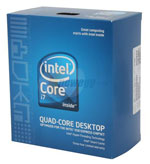 |
The i7 920 is the lowest priced Intel Core i7 you can currently buy. The other two choices are in the $600 to $1000 price range. Don't assume, however, that the 920 is not a powerful processor. The i7 920 is 30% faster in some tests than a Core 2 Quad, and then you find you can also overclock this 2.66GHz CPU to 3.6GHz to 4GHz with careful tweaking and better cooling. You will certainly be very happy with Core i7 base performance, but if you are interested in overclocking you will be even happier with this new CPU.
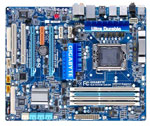 |
The Gigabyte GA-EX58-UD3R has the distinction of being the lowest priced X58 chipset motherboard you can currently buy. Others will join that sub-$200 price point soon to provide more X58 value choices. You probably also noticed that Gigabyte is trying to get as much mileage as possible from their UD3R designation, holding on to a good name as much as possible.
Since this system goal is the lowest priced Core i7 system, we stuck with the retail Intel HSF that comes with the CPU. It works fine with the Core i7 at stock speeds, even though it runs hotter than a similar Intel HSF on Core 2 chips. In the past an Intel retail HSF would be a guarantee of at least midrange overclocking, but the Core i7 runs hotter and you will not get much of an overclock with the Intel HSF. If you plan to overclock you will definitely need a third party HSF, like the Vigor Monsoon III or the Thermalright Ultra-120 eXtreme-1366.
In the Core i7 System in the $1000 to $2000 System Guide, the problems with ATI drivers on Core i7 were discussed. Since then driver releases from ATI are going in the right direction. There is also the price difference, with the capable 4870 1GB some $120 less than the now lower-priced NVIDIA GTX 280. There is also the fact that the Gigabyte GA-EX58-UD3R supports only CrossFire for multiple GPUs.
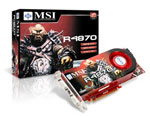 |
Put all those pieces together and the choice for GPU on the i7 Entry system is the Radeon 4870 1 GB. The best value today is the MSI R4870-T2D1G, which is just $205 after a $25 rebate. The best value in HD 4870 1GB cards shifts day-by-day, but you can generally shop for the lowest price on a 4870 1GB card and end up with a good quality card.
 |
Triple-channel memory comes in a 3GB kit (3x1GB) or a 6GB kit (3x2GB). Value dictates the 3GB choice with a great memory package from Patriot. The Viper DDR3-1333 comes as a 3GB kit won't break the bank at $70. For just $70 more, you can upgrade to a 6GB DDR3-1333 kit instead.
Good cases and power supplies are either used forever or they go with the old board on a system upgrade. Generally, it's best to invest in the best case and power supply you can afford. Since this is an Entry i7 we can cut costs on the case and PSU, and with numerous price cuts and rebates available on these components you can still get a lot of value for just a little money.
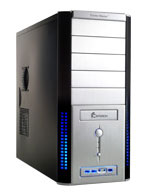 |
The Cooler Master Centurion 534 is a good value no matter how you look at it. It does come in different configurations, and the RC-534-SKN2-GP case is a good choice since it comes with three 120mm fans (front, side, and back) for cooling and installation requires no tools other than a screwdriver for mounting the motherboard. There are also plenty of drive bay options with five external 5.25" bays, one external 3.5", and four internal 3.5". Front USB/Firewire/Audio connectors are also featured. Builders report smooth edges and no sharp pieces to cut your hand during assembly. Even the expansion slots are screwless in this design. Our selection at $50 is black with a brushed aluminum and mesh front, but the case is also available in all black if you prefer at $55.
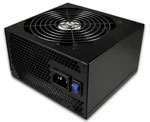 |
The power supply is an excellent value at $70. That $70 buys a 700W OCZ StealthXStream after a $20 rebate. This OCZ PSU specifies an efficiency of greater than 85% with both overload and overvoltage protection. The OCZ StealthXStream 700W should be able to handle whatever you ask of it in powering or overclocking a more basic Core i7 920 system.
 |
Hard drive capacity continues to grow, as you can see in our selection of the Samsung SpinPoint 1TB (1000GB) hard drive at just $95. For less than $100 the value is incredible. While there are differences between hard drives, outside of running benchmarks most people aren't likely to notice the difference in performance between Western Digital, Seagate, Samsung, Hitachi, and other major brands. All are worthy of consideration if the price per gigabyte (or terabyte) is right.
 |
The optical drive for an entry Core i7 system needs to play Blu-ray disks. The flexible LG GGC-H20LK has the ability to read both Blu-ray and HD-DVD format disks. It also can burn DVDs at 16x speed in single or dual-layer formats. It cannot, however, burn 25GB/50GB Blu-ray disks; adding that capability raises the cost to around $200. A BD burner like the LG 6X Blu-ray Burner GGW-H20LK is a good choice if you require a Blu-ray burner.
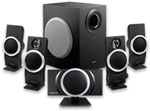 |
After reviewing the current state of onboard audio, we concluded that the onboard solutions are plenty adequate for most of today's computer users. That is why we stuck with the onboard audio on the Gigabyte. Speakers are the 5.1 Creative Inspire T6100 76W system. At $70 the T6100 delivers very good 5.1 surround sound for the price.
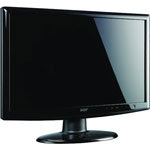 |
The LCD display resolution for the Entry Core i7 system is 1080p full HD (1920x1080). The monitor is one of the new class of 21.5" monitors with a resolution the same as last generation's 24" LCD monitors. The newest monitors use a 16:9 "true HD" ratio instead of last generation's 16:10. The resolution is the same as 24" monitors, but the price is a bargain at $190, which saves at least $100. The Acer H213Hbmid monitor is rated at 5ms and features HDMI inputs for easy hookup to the latest video cards like the MSI Radeon 4870 1GB used in this entry Core i7 system.
By paring components to the items that most affected performance, the bottom line price for a complete Core i7 is cut by more than 25% from our choices of just a few weeks ago. This reduces the price of entry for a complete i7 system to $1450 including a 1080p LCD Monitor, keyboard/mouse, 5.1 speakers, Blu-ray player, 1TB drive, Radeon 4870 1GB graphics, and Windows Vista OS. Performance of this i7 Entry system is definitely in the high-end class, although we will be extending that performance even further in our builds of the Core i7 Overclocking System, and Core i7 Dream system.










106 Comments
View All Comments
Hxx - Thursday, February 5, 2009 - link
They are referring to an "entry" system in the high end area, which is why its priced under 2000. For $1000 you will not build a core i7 gaming / multimedia... system which again, is what they're referring to. A corei7+mobo+ram+videocard will be about $1000.strikeback03 - Thursday, February 5, 2009 - link
Umm, no. The exact corei7+mobo+ram+videocard they chose is $755. Switch to a cheaper video card (under-100 gets you less gaming, but fine for entertainment or other non-gaming use) and that leaves you $350 short of $1000, meaning you can easily add DVD burner, case, hard drive, and PSU for under $1000. Depending on how small a HDD and monitor you choose, you might be able to sneak a complete system under $1000. Obviously this provides lots of processor power relative to everything else, but if that is your need then it works.frozentundra123456 - Thursday, February 5, 2009 - link
How can you even fit the OS on your 1 GB hard drive mentioned in the final words??? (LOL) There is a typo there, obviously should be 1 TB.Wesley Fink - Thursday, February 5, 2009 - link
Corrected to 1TB. Thanks for letting us know in good humor.H8ff0000 - Thursday, February 5, 2009 - link
I think the HT Omega Claro Halo XT would be a better choice for a dream system sound card.Wesley Fink - Thursday, February 5, 2009 - link
I agree the HT Omega Claro Halo XT is a superb audio card, and it is one I would choose for my own system. The C-Media CM18788 chipset is a spectacular performer.However, at $250, we believe the top HT Omega card should be matched with much better than powered PC speakers. If we use the HT Omega and then pare it with audiophile grade amplifiers and speakers we are are completely busting our self-imposed $5000 budget. In addition we didn't want the selection of audiophile audio components to become the focus of the comments and discussion - so we chose a more conventional high-end computer audio solution. We did mention Option #2 - we just didn't flesh it out.
We also thought that most of our readers, who mostly believe on-board sound is more than adequate, would have a tough time swallowing a $250 audio card and associated components. For those who can appreciate its virtues the HT Omega Claro cards are a superb choice.
AmbroseAthan - Thursday, February 5, 2009 - link
I was actually going to say the same thing. How is it that the Xonar made it and Creative/Asus got honorable mention, but nothing towards the HT Omega line?In almost any test, the Omega lineup blows the doors off the other cards in almost all categories and the Halo XT would be perfect for anyone who wants an amazing sound system. If I was dropping this much money on a system, you can gaurentee I would be making sure I had a sound system to match the rest.
reform - Thursday, February 5, 2009 - link
How about Remote Desktop? An essential feature not available on Vista Home Premium.... an interesting fact I found out to my dismay after installing Home Premium recently! Thank the lord for LogMeIn... a good alternative.Spivonious - Thursday, February 5, 2009 - link
There's also FreeVNC. I don't think the lack of Remote Desktop server (the client is in all versions of Vista) is a reason to avoid Home Premium. Just how often are you logging in remotely anyway?Lord 666 - Thursday, February 5, 2009 - link
While the guide was well thought out and generally explained, the one part lacking was a full explainantion on the different hard drive selections... Specifically the WD Black. For only $15, it was passed over for the first two systems, but then used in the dream system with out proper justification.IMHO, $15 is insignificant and if its good enough for the dream system, it should be used across the board.